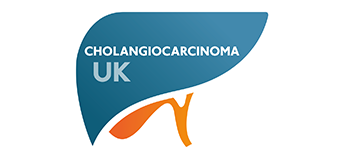Surgery
Surgery to completely remove the cancer is currently the only potentially curative treatment for cholangiocarcinoma. This involves a major operation and, often, because the disease is too far advanced, or the patient is already too poorly, surgery is not possible. The decision about whether an operation to remove the cancer can be done depends on the results of the diagnostic tests, and on the patient’s general health.
Why surgery for cholangiocarcinoma may not be possible: click here
If surgery is possible, the patient must be referred to a surgeon who specialises in biliary tract cancer surgery. The type of operation that is done depends on the size of the cancer and whether it has begun to spread into nearby tissues.
- Removal of the bile ducts
- Partial liver resection
- Whipple procedure
- Surgery to relieve obstruction (blockage)
- Liver transplantation
- Stent Insertion
May 2017: Following the positive outcome of the BILCAP trial*, it is expected that Capecitabine chemotherapy will be offered to all patients following a resection for cholangiocarcinoma.
*The result of the BILCAP trial showed that three year survival improved by almost a quarter (23 per cent) in patients who were given Capecitabine, and the average survival was increased to 53 months from 36 months compared to those who only had surgery. For more information, go to: https://ammf.org.uk/2017/05/18/bilcap-results-show-chemo-improves-survival.
Removal of the bile ducts
If the cancer is at a very early stage (Stage 1), just the bile ducts containing the cancer are removed. The remaining ducts in the liver are then joined to the small bowel, allowing the bile to flow again.
Partial liver resection
If the cancer has begun to spread into the liver, the affected part of the liver is removed, along with the bile ducts.
Whipple procedure
If the cancer is larger and has spread into nearby structures, the bile ducts, part of the stomach, part of the small bowel (duodenum), the pancreas, gall bladder and the surrounding lymph nodes may need to be removed.
Surgery to relieve obstruction (blockage)
If surgery to remove the tumour is not possible, it may be possible to operate to relieve the blockage. This will help to relieve jaundice as the blocked part of the bile duct will be bypassed so that bile can flow from the liver into the intestine.
Another method of relieving a blockage, without an operation, is to insert a tube (stent) into the duct which will hold it open.
If a part of the small bowel (duodenum) is blocked this can cause problems such as vomiting. This may be helped by surgery to connect the stomach to the next section of small bowel (the jejunum) bypassing the duodenum.
Liver transplantation
Complete removal of the liver and bile ducts followed by transplantation of a donor liver has been used in a small number of highly selected patients in the USA and a few other countries, to treat cholangiocarcinoma. However, transplantation for UK cholangiocarcinoma patients has not been an option.
UK Update – 2020
During 2020 a group of liver specialists was set up to consider liver transplantation for cholangiocarcinoma in the UK, and recommended that there should be a service development to offer transplantation to two groups of patients with cholangiocarcinoma. The first group was those with perihilar cholangiocarcinoma on a background of sclerosing cholangitis, the second group was for patients with intra-hepatic cholangiocarcinoma on a background of chronic liver disease.
Back to previous page







